FNY has been spending a lot of time in Brooklyn of late, at least for the weekly longform posts, and I’ll continue in that vein this week, with the second of a two-parter in Fort Greene and Clinton Hill where I spent some time in June 2016. Fear not, I’ve made some recent journeys to adventure in Manhattan, Bronx, Queens and Staten Island these past few months and those voyages will be represented over the next few weeks.
I was in Fort Greene and Clinton Hill to scout a ForgottenTour scheduled for late June. Unfortunately I came down with a bad back one day before the tour and was forced to cancel while I recuperated. Why let the notes I accumulated go to waste? I’ll reschedule the tour sometime in the next couple of years, but I’ll post my notes right here along with some extras.
While Fort Greene can be said to extend roughly from the Flatbush Avenue Extension east to Carlton Avenue and from Farragut Houses/Brooklyn Navy Yard south to Atlantic Avenue, Clinton Hill runs from Carlton Avenue east to about the Pratt Institute area at Classon Avenue, where it melts into Bedford-Stuyvesant; no true exact boundaries have been mapped, and if you live on, say, Adelphi Street and you want to be considered a Fort Greener, no one’s going to really mind. The boundary is easier to make out east of Fort Greene Park between Myrtle and DeKalb Avenues, where I am picking up where I left off in Part One along Willoughby Avenue.
GOOGLE MAP: FT. GREENE AND CLINTON HILL
Along with Clinton Street in Brooklyn Heights, Cobble Hill, Carroll Gardens and Red Hook, Clinton Hill and Clinton Avenue are named for DeWitt Clinton (1769-1829) who held every major office in NY City and NY State including in the state legislature, NY State Senator, US Senator, NYC Mayor (3 terms), and NYS Governor (4 terms). His mansion was located in Maspeth, Queens and after his death he was buried in Albany, but later he was exhumed and moved to the new Green-Wood Cemetery in Brooklyn to popularize it.
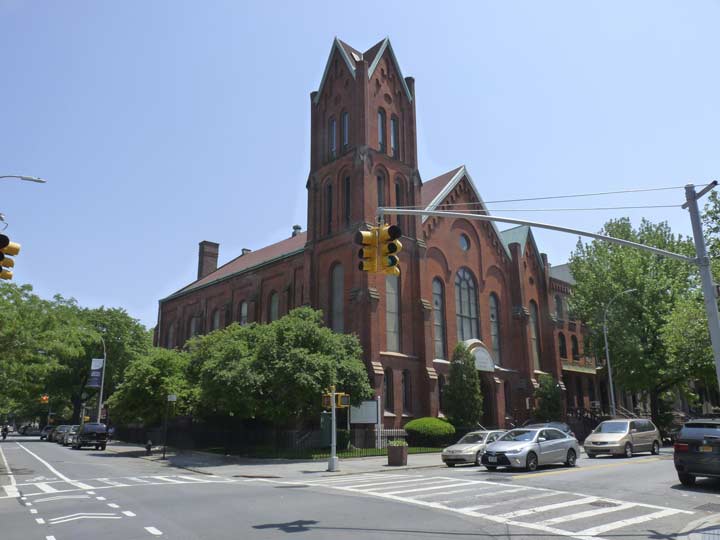
Some of the streets in Clinton Hill break the usual pattern; Cumberland between DeKalb and Myrtle avenues assumes the old name of Fort Greene Park, Washington Park; while Willoughby Avenue, which begins at Washington Park, has a counterpart on the western side of Ft. Greene Park, Willoughby Street. Undoubtedly they were laid out as a continuous route at one time, but after the park was built between 1847 and 1850, one Willoughby became a street and the other, an avenue.
Here’s a Romanesque church at the SE corner of Willoughby and Clermont Avenues that has gone by a number of congregations and religions since it was built in 1870: Simpson Methodist, then Jewish Center of Fort Greene, and now Eglise Baptiste d’Expression Française, a Baptist church serving a Haitian congregation. Its old Stars of David can still be seen above the doors.
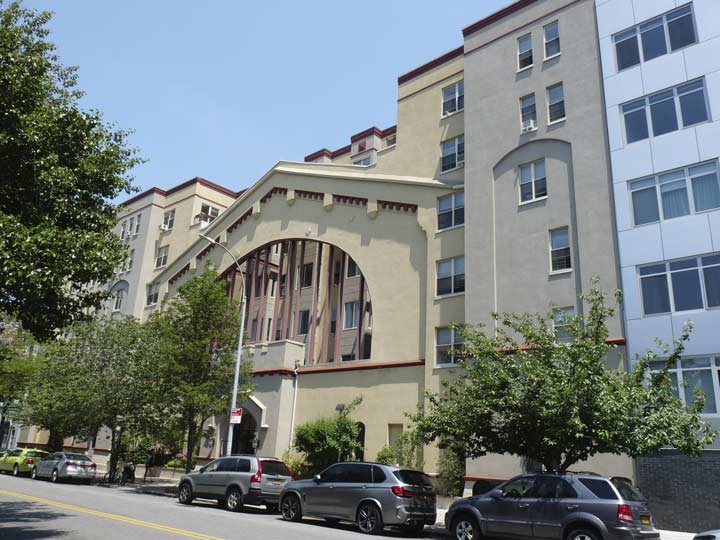
Clermont Armory Towers, 171 Clermont north of Willoughby. This was an actual armory built in 1873 (making it NYC’s oldest standing armory). It was home to the NY State 23rd Regiment. Conversion to residential was completed in 2000.
The Caroline Ladd Pratt House, 229 Clinton Avenue, is possibly the most sumptuous of the many luxurious buildings that line Clinton, Washington and Vanderbilt Avenues in the Clinton Hill section.
Charles Pratt (1830-1891), the founder of Astral Oil, made his fortune in kerosene and founded the prestigious art school, nearby Pratt Institute. Pratt built four homes in Clinton Hill as wedding gifts to his first four sons, Charles Millard, Frederic, George and Harold. Three remain standing: 229 Clinton, Fred’s place; Charles Millard’s place next door, 241 Clinton, now the residence of the Bishop of Brooklyn; and George’s on 245 Clinton, now St. Joseph College. The Pratt family later constructed a number of elegant mansions in Glen Cove, Nassau County, many of which still stand. Singer-songwriter Andy Pratt, who had some low-charting hits in the 1970s, including “Avenging Annie,” was a great-grandson.
229 Clinton was completed in 1898 by architects Babb, Cook and Willard, and occupied by Frederic and wife Caroline Ladd Pratt. Frederic was president of Pratt Institute from 1923-27, and the house’s occupant as of 2005 was Pratt president Thomas Schutte and wife Tess. Students occupy the top floor of the house.
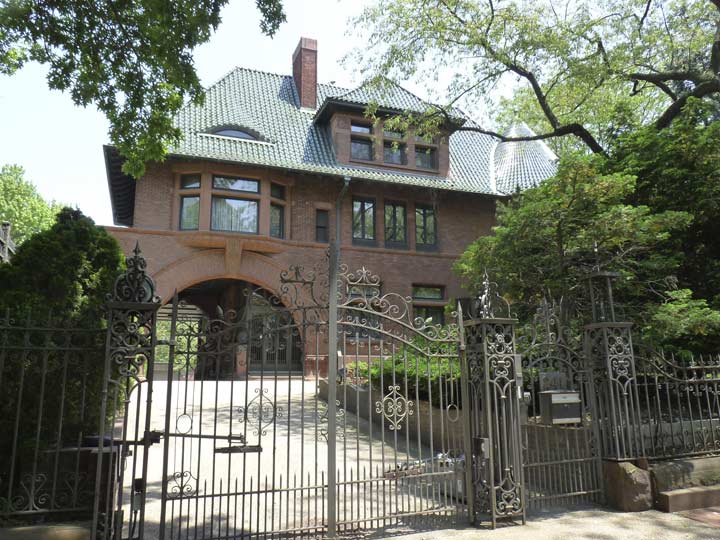
241 Clinton Avenue, the residence of the Bishop of Brooklyn (in 2017, Nicholas DeMarzio)

245 Clinton, now part of the St. Joseph College campus, is more easily photographed from Clinton Avenue in fall and winter.
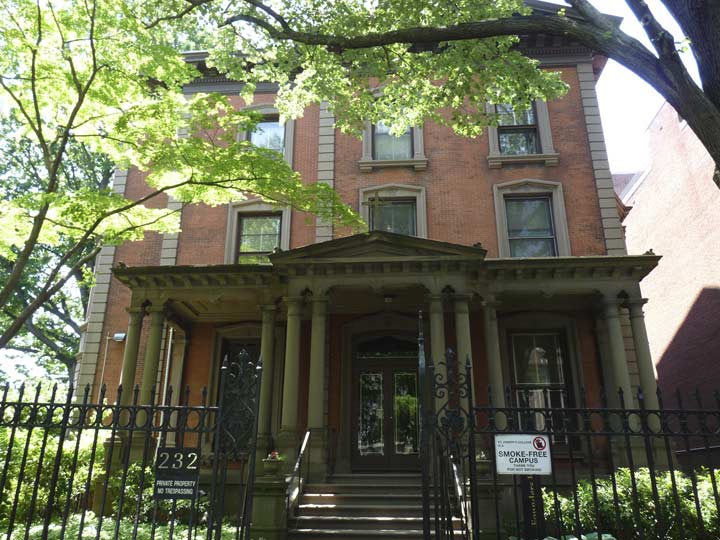
232 Clinton, on the west side of the avenue, was the original Charles Pratt mansion and ground when completed in 1875 [Ebenezer Roberts, arch.]. It is now the Founders Hall of St. Joseph’s College.
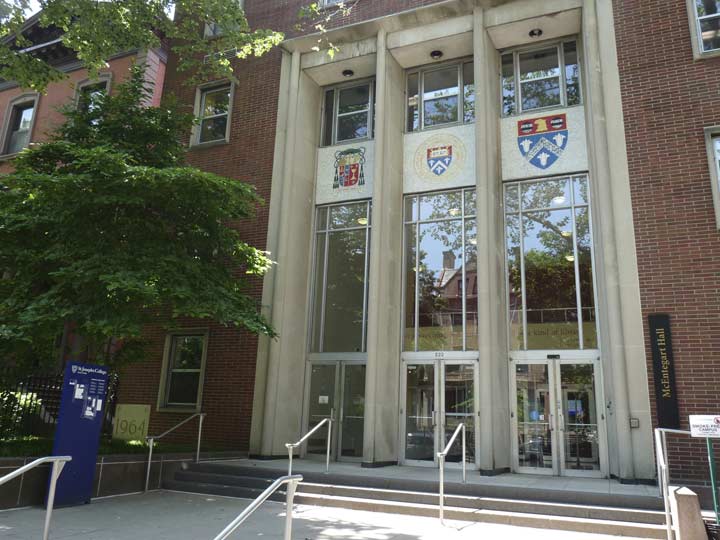
St. Joseph’s College, 245 Clinton Avenue, occupies several buildings in Clinton Hill, some of them landmarked. It was founded as the St. Joseph College for Women in 1916 and first occupied a building at 286 Washington Avenue and moved to its present address in 1918. Male students were first admitted in 1970 (a year after my alma mater, St. Francis College in Brooklyn Heights, first admitted women). St. Joseph’s opened a campus in Patchogue on Long Island in 1979.
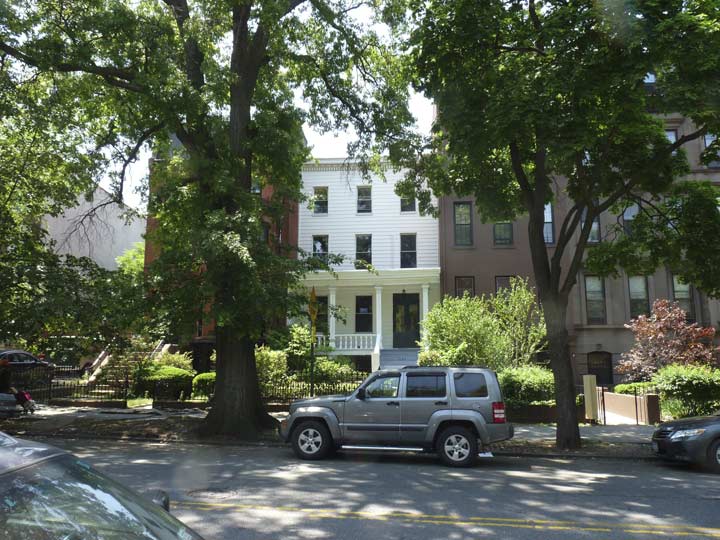
Trio of gems, including a surviving woodframe house. on the west side of Clinton Avenue between Willoughby and DeKalb Avenues.
I liked this building on #284 Clinton near DeKalb so much, I shot it from two angles. It’s one of the oldest remaining homes in Clinton Hill, constructed for William Crane in 1854 in an early “stick style,” named for the thinness of the porch timbers.
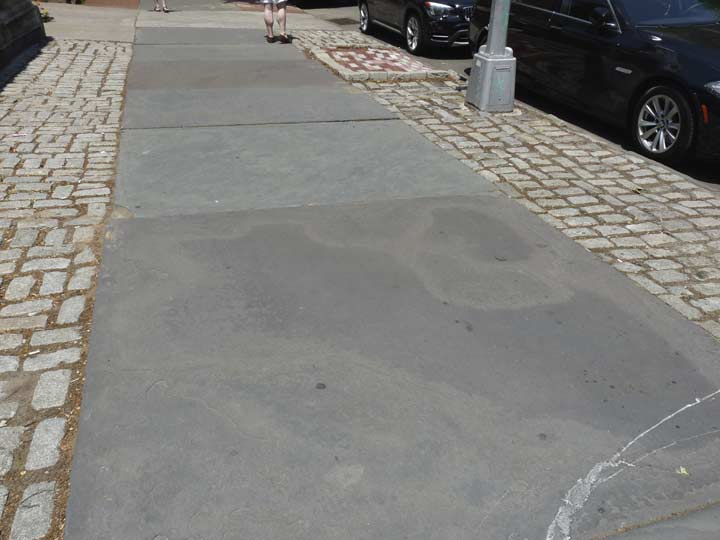
A bluestone sidewalk always indicates a venerable neighborhood. Here, it’s lined by park-style interlocking brickwork.
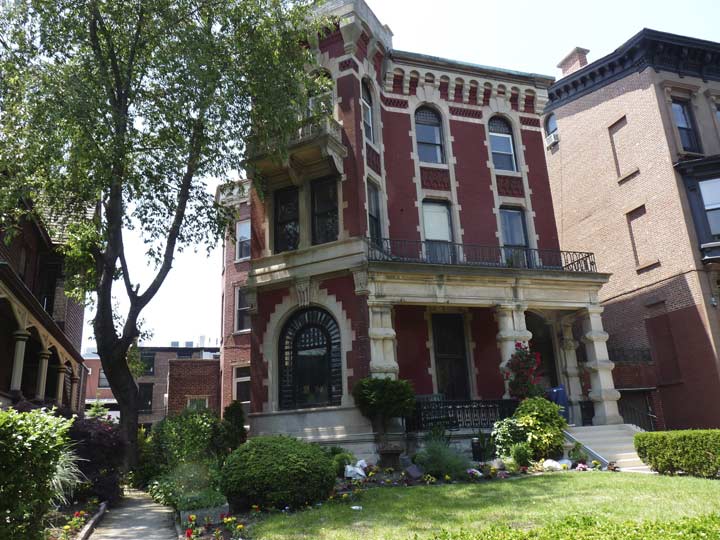
Next door is #286, reflecting the eclectic styles at play in Clinton Hill, a brick building with a diagonal parapet and unusual porch columns. The building dates to 1884 according to the AIA Guide to Brooklyn.
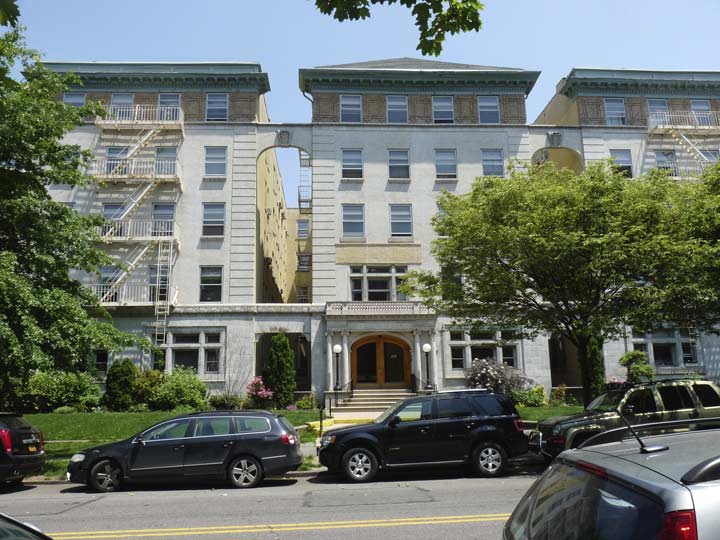
The Clinton Apartments, a massive late 19th Century apartment building on the NE corner of Clinton and DeKalb avenues.
It’s hard to nail down my favorite building in Clinton Hill but there’s a good chance that it’s the Joseph Steell House, #200 Lafayette Avenue at Vanderbilt.
One of the largest and grandest woodframe antebellum houses remaining in Clinton Hill. The cupola is a nice touch and must have afforded views across the fields to downtown Brooklyn when the house was built around 1850.
Maybe it’s near where you live and you pass by all the time or maybe it’s in a neighborhood you get to less frequently, but it’s a house that you have an emotional attachment to even though you’ve never set foot inside. For us, that house is the Joseph Steele House on the southeast corner of Lafayette and Vanderbilt. Whenever we walk by (which is frequently) we’re always hoping we’ll get to see something we haven’t before: Maybe the garden door will be open a crack and we’ll catch a glimpse of what the back stair looks like. Or maybe a light will be on in the dining room and we’ll get to see if there are moldings on the ceiling. And, of course, there are the fantasies of someday living there. We’re not the only one with a certain affection for this place. Here’s what the AIA Guide has to say about the 1850 charmer:
An extraordinary relic from the days when these precincts were farm country. Greek Revival, with elegant narrow clapboards, a bracketed cornice with eyebrow windows, and a widow’s walk with a view of the harbor in those open, early days. It wears its age well, with dignity. Jon Butler, Brownstoner
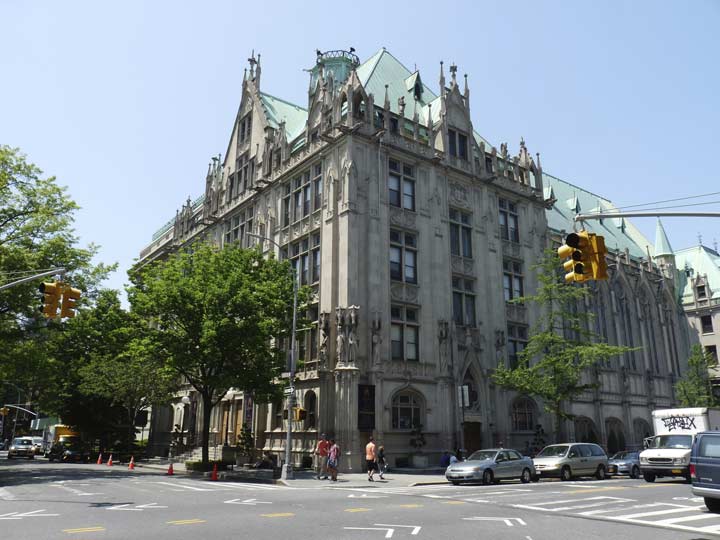
An incredibly Baroque building, Queen of All Saints Church, #300 Vanderbilt Avenue at Lafayette, was modeled after the medieval Gothic style of Sainte Chapelle in Paris and is considered one of the most beautiful churches in the Brooklyn diocese. It celebrated its centennial in 2013.
Created from carved white stone, the church has a soaring steeple, towering interior columns and over two dozen life-sized statues. Lining the walls are 14 stained-glass windows, each containing at least 22,820 pieces of glass, depicting 260 Old and New Testament subjects.
To this day, the church has maintained its bronze light fixtures; original pews, constructed of French oak, and four-manual Wirsching organ. –The Tablet
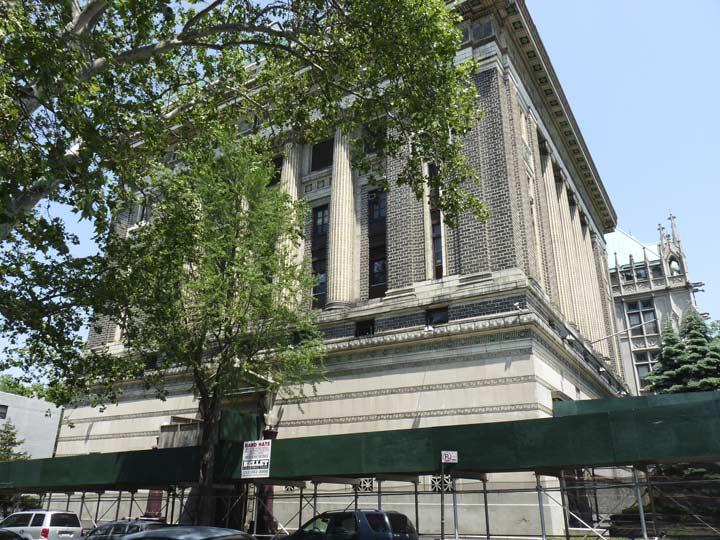
The Brooklyn Masonic Temple, Lafayette Avenue was assembled in 1908 by not one but two architectural firms, Lord & Hewlett and Pell & Corbett. It’s notable for its eight Ionic columns on the front and side and for its liberal use of colored terra cotta glazing, a relative color riot with red, blue, gold and green all employed in addition to the traditional beige. Not sure if the interior can stand up to the Grand Masonic Lodge on West 23rd in Manhattan, however.
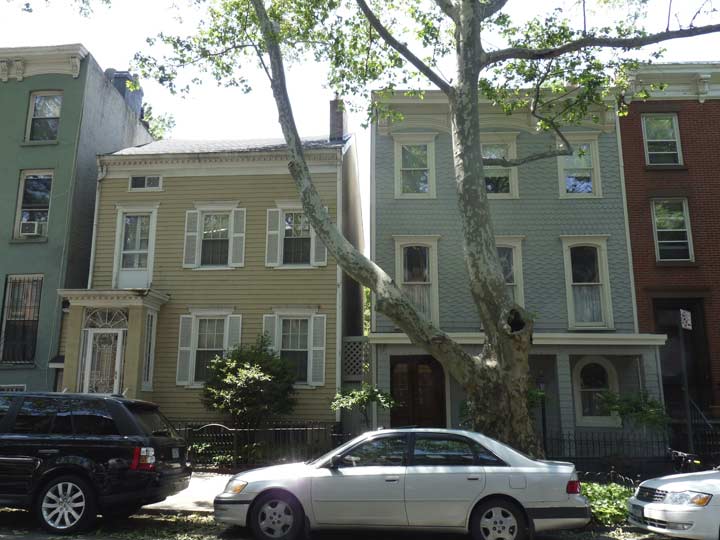
Walking north on Clermont Avenue, named for Robert Fulton’s steamship, I noticed some more of Clinton Hill’s woodframe buildings, which are increasingly endangered because developers see them as wasteful of real estate that should be used for multifamily dwellings.
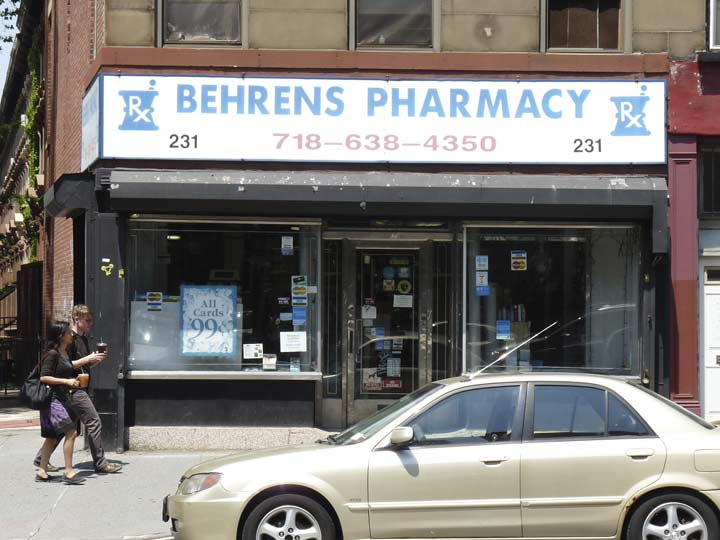
Behren’s Pharmacy, #231 DeKalb at Clermont Avenue. The sign is rendered in classic Futura Bold, which after 90 years remains one of the world’s most popular sanserif fonts. It was first developed by German type designer Paul Renner in 1927.
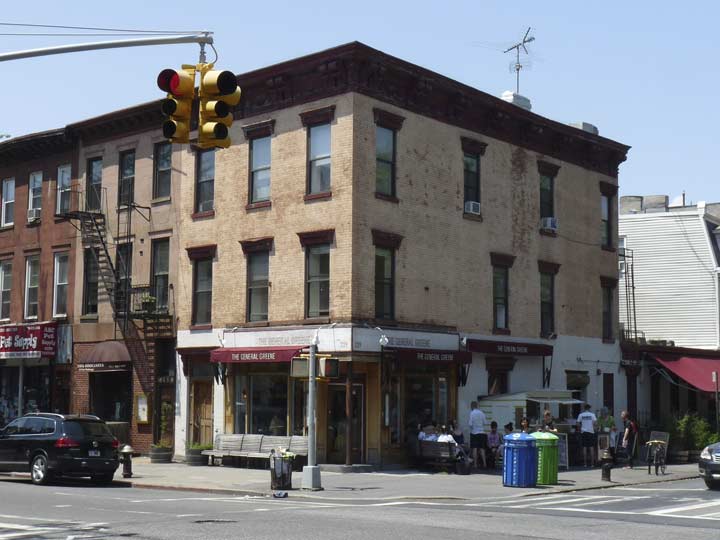
The General Greene is a diner-style restaurant on DeKalb and Clermont, named, like Fort Greene and Greene Avenue, for Revolutionary-era General Nathanael Greene (see bio link in Part 1). Reviews are mixed. According to one of the managers, photos aren’t allowed on the patio…
Turning north on Hall Street I found what had been the parish house for St. Luke’s Evangelical Lutheran Church around the corner on Washington Avenue. The congregation, in existence since 1869, built the church in the mid-1890s on land purchased from the estate of Charles Pratt. The parish house dates to 1924. St. Luke’s closed 8/31/15 and the church building itself is expected to be redeveloped as condominiums; the parish house awaits its fate.
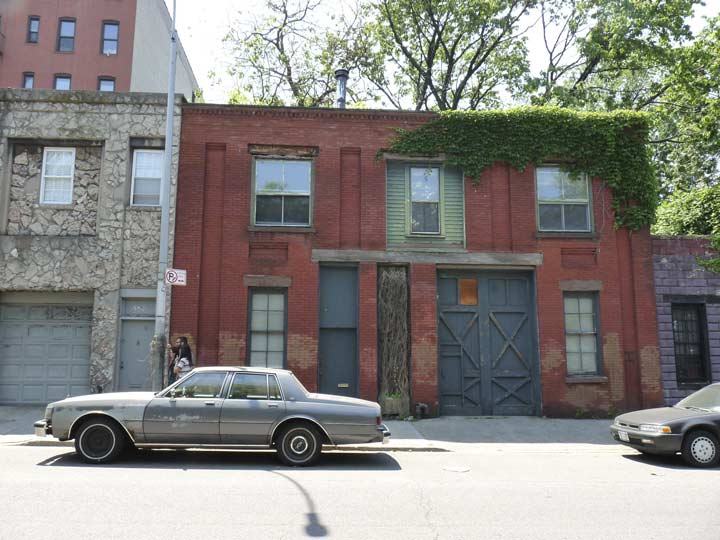
Hall Street, named for Brooklyn’s first Mayor, George Hall (1795-1868) borders Pratt Institute on the east. The west side of the street, like other Clinton Hill streets like Waverly Avenue, was largely given over to stables in the 19th Century that have been repurposed as dwellings or auto garages. This one has retained much of its original look as Dobbin storage.
Ryerson Street, which runs 2 blocks between Flushing Avenue on the north and Myrtle on the south, is nothing to write home about architecturally. there are some nice brick face buildings, but many of the houses now have aluminum siding.
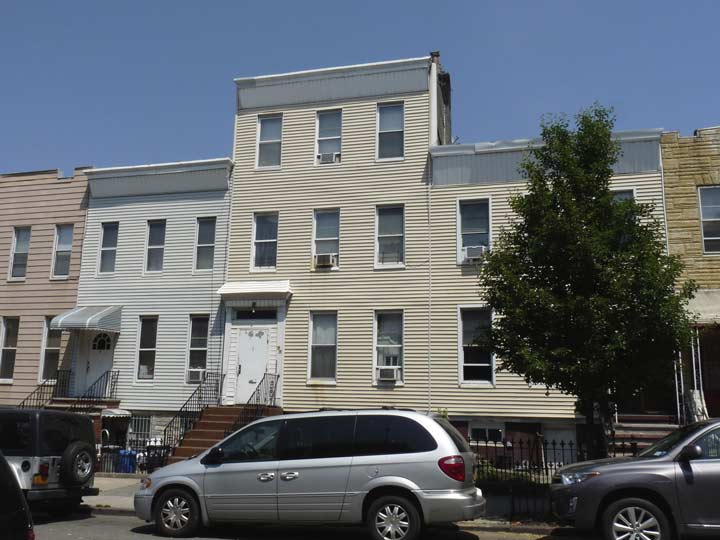
#99 Ryerson, the 3-story building in the center, is one of the aluminum-sided buildings. It’s also one of Clinton Hill’s most historic–it’s also the only one of journalist Walt Whitman’s residences still standing in Brooklyn. FNY had the full story in June 2016.
Naval Cemetery Landscape
In the spring of 2016 a new public space opened, one of the rare ones in the Brooklyn Navy Yard, on Williamsburg Street West (a service road of the Brooklyn-Queens Expressway) between Flushing and Kent Avenues. The Naval Cemetery Landscape is a memorial to more than 2000 Naval officers and Marines who were buried on the Naval Hospital grounds between 1834 and 1910. In 1926 the remains were moved to National Cemetery in Cypress Hills several miles to the east.
The park, designed by Marvel Architects and Nelson Byrd Woltz Landscape Architects, features native grasses, wildflowers, shrubs and trees, and was landscaped to be home to birds, bees and butterflies. [DNA Info]
The park is open Wednesdays through Sundays between 8 AM and 8 PM.
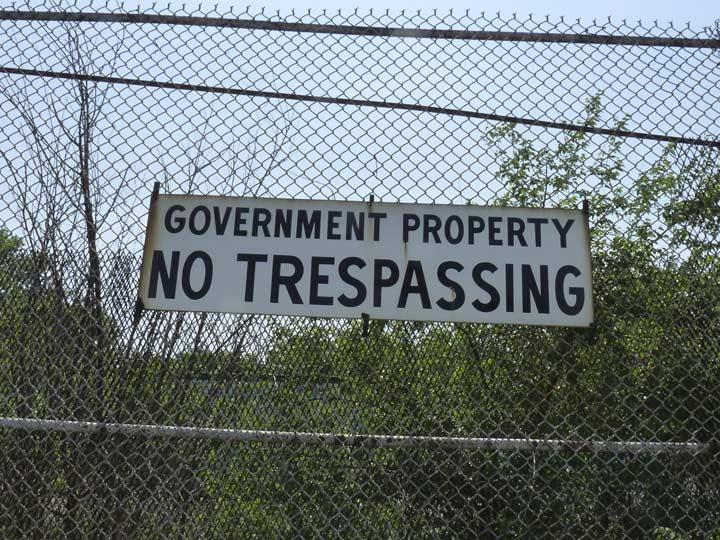
Despite this new public initiative, reminders of the old top-secret status of the Navy Yard are visible just to the north such as this No Trespassing sign.
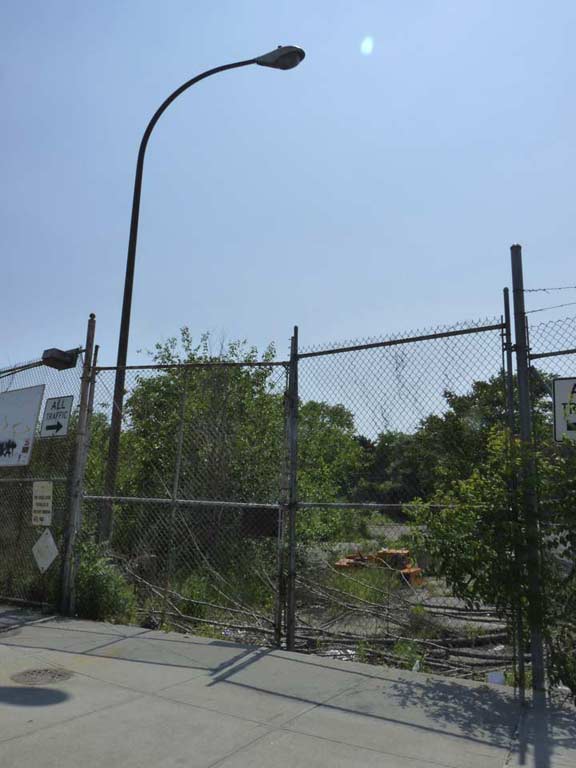
This section of the Navy Yard also preserves some davit-style lampposts with 1960s-era GE M-400 mercury luminaires.
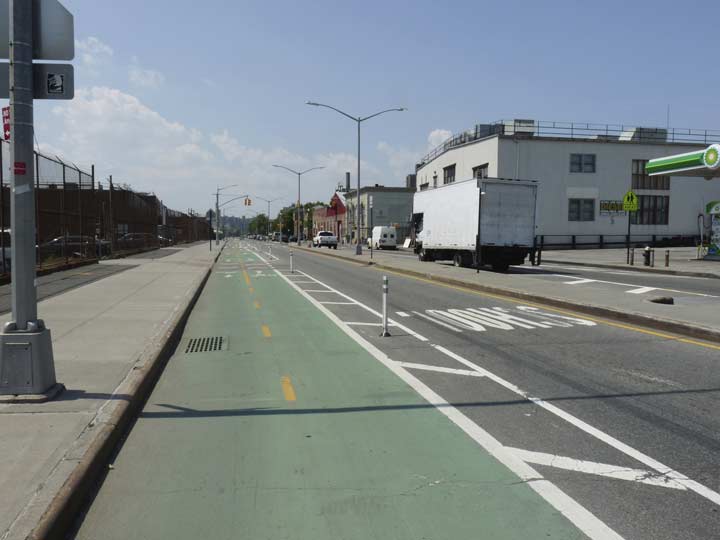
While Kent Avenue has fast and furious traffic as it takes a crescent-shaped route north to Williamsburg and Greenpoint, it acquired a protected bike lane about 10 years ago.
After approximately a 5-hour walk, I went about an hour more to North 7th Street and the L train back to Manhattan, an option that will disappear for about 15 months beginning in 2019.
“Comment…as you see fit” in Comments.
4/2/17

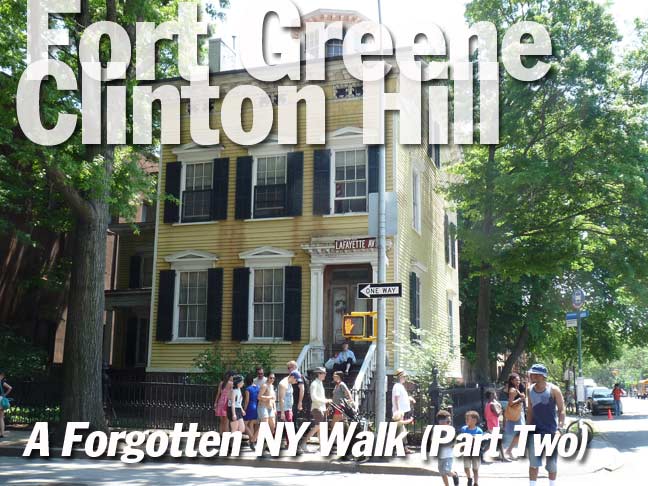
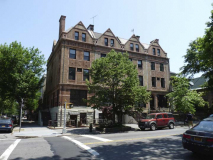
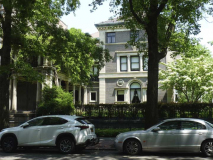
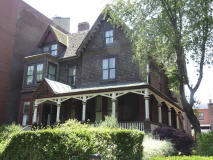
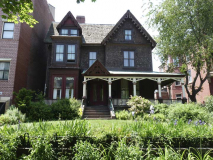
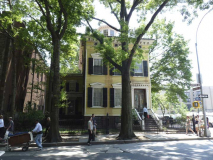
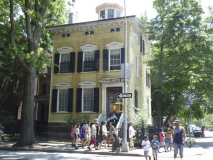
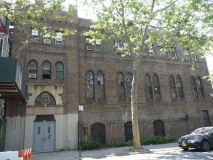
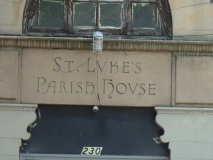
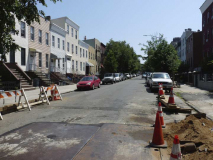
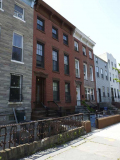
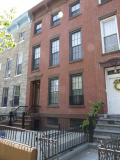
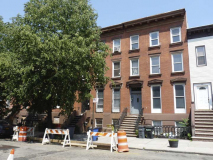
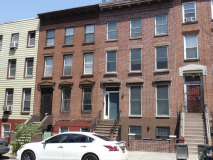
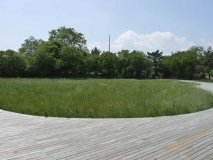
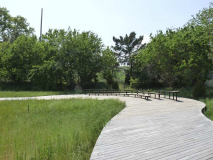
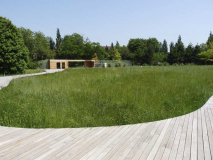
12 comments
Thank you for another delightful tour.
The Joseph Steell house is actually on Lafayette and Vanderbilt Avenues. Diagonally across from Queen of All Saints Church. I grew up a block away in the Clinton Hill Apartments. Thanks for the tour down memory lane.
Thanks for the correction.
Lord only knows how many times Ive tried to make out a steeple on the Queen of all Saints church photo.
What an absolute gem of a neighborhood; Clinton Hill is full of an electic assortment of architectural beauties. Thanks Kevin for sharing it with us.
I think 171 Clermont was also home to a semi pro ice hockey team around 100 years ago.it was in stan fischlers book metro ice.
I went to Bishop Loughlin High School, which covers the block bounded by Clermont, Greene, Vanderbilt and Lafayette Avenues. Evidently you walked past it but didn’t photograph it. Many of the buildings pictured in your post are still familiar to me even though I graduated from Loughlin in 1972 and haven’t been back more than a couple of times since then. I especially remember Queen of All Saints and the Masonic Temple, which were visible side by side from many of my old school’s classrooms and which loomed over us in the Loughlin school yard just across from them on Lafayette Avenue. Clinton Hill was a much rougher neighborhood in the 70’s but even so it had a worn elegance that made a big impression on me as a teenager from Ozone Park, Queens.
@ P Nolting ,
I graduated from Bishop Loughlin , Class of ’70
On rare occasions , you’d see the old woman who lived in the yellow Steele House on the corner …
We were told that she was the last living direct descendant of original owner(s) …
I should have mentioned the Steele House too. I was fascinated by it in high school. It was a wreck then, looks in better shape now. I’m glad it’s still around and apparently cared for.
Lived in this area for several years. Beautiful features. Beautiful area. I miss it sooo much
LOVE your posts! Completely unrelated to its content: do you have an older brother Terence and sister Kathy? Cousin Kathleen Doyle from Yonkers? Knew them on Long Beach Island, NJ in the 60s.
nah